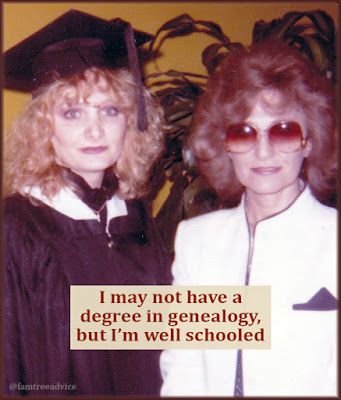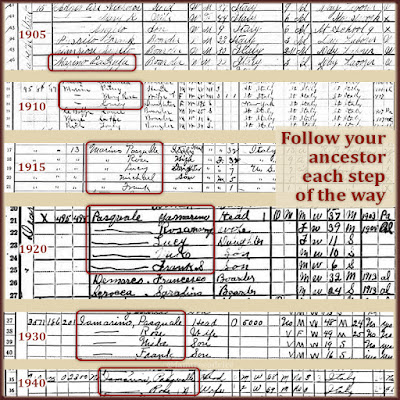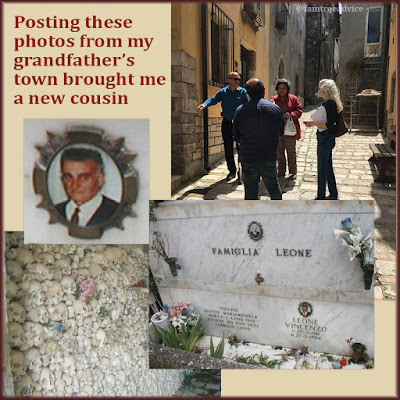To paraphrase "The Matrix", only try to realize the truth. There is no wall.
Every genealogy fan has at least one brick wall that drives them crazy. And we all want to know the secret: How do I break through my brick wall?
Since everyone's brick wall is different, we've got to take a few steps before we can start to break through.
1. Define a Specific Problem
The first step in breaking through a brick wall is clearly defining one specific problem.
When I was starting to build my family tree, I got pretty far on my dad's side. But his mother's mother—Maria Rosa Caruso—quickly became my brick wall. I couldn't get anywhere on her line.
Is that when we decide something is a brick wall? When we can't move beyond this one person?
 |
| Not long ago, I couldn't even find her parents' names. Look at her branch now. |
You can define the problem by stating one key fact you're missing. What is it that's holding you back?
My Brick Wall Definition: I can't find Maria Rosa Caruso on a ship manifest because I don't know her hometown in Italy.
My definition isn't "I can't fill out her branch of my family tree". It's smaller. It's the next step I need to take but can't. I need to find her coming to America, but I can't positively identify her without her hometown.
2. Build on What You Can Find
Many years ago, a cousin-in-law found me on an Italian genealogy message board. Her husband is also the great grandchild of Maria Rosa Caruso. But he had the advantage of growing up with her and the Ohio part of my family.
My new-found relatives told me the name of Maria Rosa's hometown: Pescolamazza. (See what to do when your hometown isn't on the map.)
Now I could find her on a ship manifest. And I learned that she came to America—4 months before marrying my great grandfather—to join her brother Giuseppe. So I searched for Giuseppe, too.
I began to piece together several Caruso siblings and the places where they lived. Some of the siblings' ship manifests told me their father's name. My great great grandfather was Francesco Saverio Caruso.
3. Compare Available Documents
It was Maria Rosa's brothers' documents that gave me clues to my great great grandmother's name.
One record transcribed their mother's name as Maria L. Gilardo. Another record transcribed her last name as Girandiu. My great uncle Giuseppe Caruso's death certificate Americanized his mother's name as Marie Gerard. (See This Expanded Resource Provided an Elusive Maiden Name.)
When I compared the 3 versions of the name—Gilardo, Girandiu, Gerard—I had a hunch her name was Girardi.
That felt like a victory, but I still didn't know for sure.
4. Seek Out New Documents
Then a glorious day arrived. The Italian genealogy archives website (Antenati) posted the vital records from Pescolamazza. I found my great grandmother Maria Rosa's 1880 birth record, and the surprise birth record of her twin brother.
This revelation came about 14 years after my search began.
Her birth record confirmed, finally, my great great grandmother's name: Maria Luigia Girardi. I admit, I got lucky when those Italian vital records from the town went online.
 |
| Her hometown was the one brick that brought down the wall. |
You can chip away at your brick wall by breaking it into smaller problems.
"I can't get beyond this one relative," you say.
What clues can you find about where they came from? Can you discover more about their relatives whose names you do know? Which documents might hold a clue? Immigration records, death records, wills, applications, pension forms?
If you can knock out enough individual bricks, your brick wall can collapse. And what a wonderful mess that will be.




















